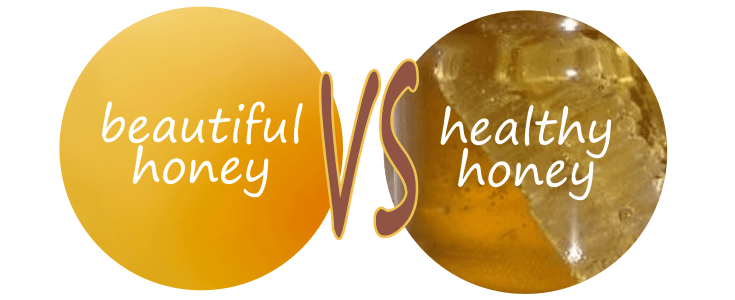What are the differences between organic honey and regular honey? What is raw honey? There is so much confusion these days, than when it comes to buying honey, we read the labels and then wonder what that is?
Marketing is playing with our knowledge and uses different terms to attract buyers. This is how from a perfectly natural product as honey, we read on the jars: “Natural Honey”! How else can it be?
Oh, I’ve almost forgotten. There is artificial honey, too, but I don’t expect to see it in supermarkets on shelves.
There are two major types of honey considering:
• organic farming: Organic honey and Regular honey.
• processing: Raw honey and Processed honey.

Regular honey
may imply:
– regular crops/fields/ forests which may have been sprayed with pesticides or had synthetically fertilized lands
– bees’ treatment with antibiotics (such as Ciprofloxacin in China’s honey) and winter nourishment with sugar, or low cost syrup (cane, corn, beet, rice, tapioca or others fruit syrup).
– hives made of non-organic materials, which may have pests, mice, spiders and be cleaned with non-organic substances
– the extracted honey is pasteurized and filtered which implies heating at high temperatures, destroys enzymes and increasing the level of toxins.
– added additives.
Raw organic honey
refers to crude honey immediately taken out of the combs’ cells. It is not pure, it may contain rough particles of pollen, dead bees, legs, wings, hunks of wax and other impurities. This is why it can be strained with a fine mesh bag to remove these impurities. It must:
– respect organic farming management
– not be heated above 95 degrees F / 35 degrees C (if extraction implies heating), the normal temperatures of the bee hive.
– be strained (to remove larger particles) – if wanted.
– not be filtered or ultrafiltrated (as this also implies overheating).
– not be pasteurized.
– not have any other added substances or additives.
– be stored in organic recipients (light brown/amber glass jars).
Organic honey
usually means raw organic honey, as heating is not allowed here as well, not above maximum 95 degrees F. To be organic, honey must:
– follow good organic management, according to each country’s set of standards and conditions. More details on the page What is organic honey.
– Processing should only be done by the means of gravitational settling and straining.

Also read:
What is the difference between pure honey and raw honey?
Fake honey! Do you really know what you’re eating?
What is artificial honey or fake honey? What we have in our food!
Info references:
http://www.honeytraveler.com/types-of-honey/organic-honey/
http://www.wisegeek.com/what-is-organic-honey.htm
http://en.wikipedia.org/wiki/Honey
